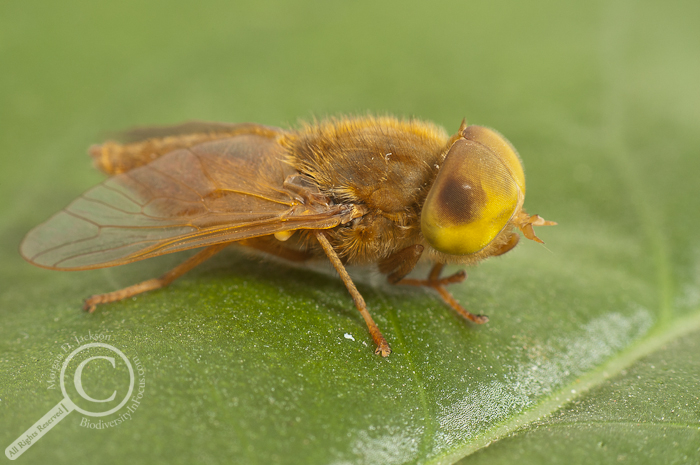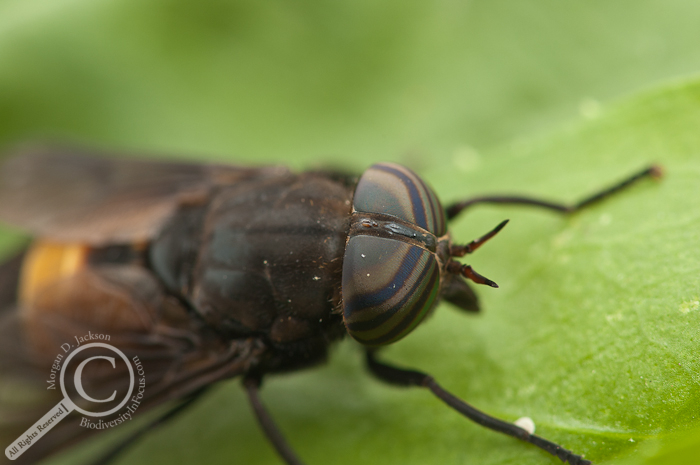It’s a been a busy period for the Canadian Journal of Arthropod Identification, and today I bring you lucky #13, the final volume chronicling the horse & deer flies of Canada east of the Rockies. Although Canadian tabanids were relatively recently treated by H.G. Teskey (1990), Anthony Thomas has now updated the distributions for these flies, and has greatly increased the number of illustrations, simplifying the identification of these beautiful brachycerans.
As is the standard for CJAI publications, Anthony has included incredible high magnification photographs of the characters needed for identification, and also showcases stunning live photos from the field with the vivid eye patterns representative of these flies.
This latest publication specifically covers the Tabaninae, but combined with his previous CJAI paper on the Chrysopsinae and Pangoniinae (co-authored with Steve Marshall), all 124 species found this side of the continental divide can be easily identified thanks to Anthony. All of the keys are specifically designed to identify females, the most commonly collected gender because of their thirst for vertebrate blood!
When you’re out walking the woods this summer, why not grab those flies resting on the back of your head and find out what’s been feeding on you!
References: Thomas, A.W. and Marshall S. A. 2009. Tabanidae of Canada, east of the Rocky Mountains 1: a photographic key to the species of Chrysopsinae and Pangoniinae (Diptera: Tabanidae). Canadian Journal of Arthropod Identification No. 8, 25 June 2009, available online at http://www.biology.ualberta.ca/bsc/ejournal/tm_08.html, doi: 10.3752/cjai.2009.08. Thomas, A. 2011. Tabanidae of Canada, east of the Rocky Mountains 2: a photographic key to the genera and species of Tabaninae (Diptera: Tabanidae) Canadian Journal of Arthropod Identification No.13, 16 February 2011, available online at http://www.biology.ualberta.ca/bsc/ejournal/t_13/t_13.html, doi: 10.3752/cjai2011.13


Their eyes always entrance me. Even when they’re nibbling on me, I admit, though the admiration doesn’t last as long under those circumstances.
Another gorgeous key:)
This is great! I can’t wait for the day when we can point at a fly (at least some if not all) and say this is so and so. Just how we identify many butterflies! Thanks for sharing!